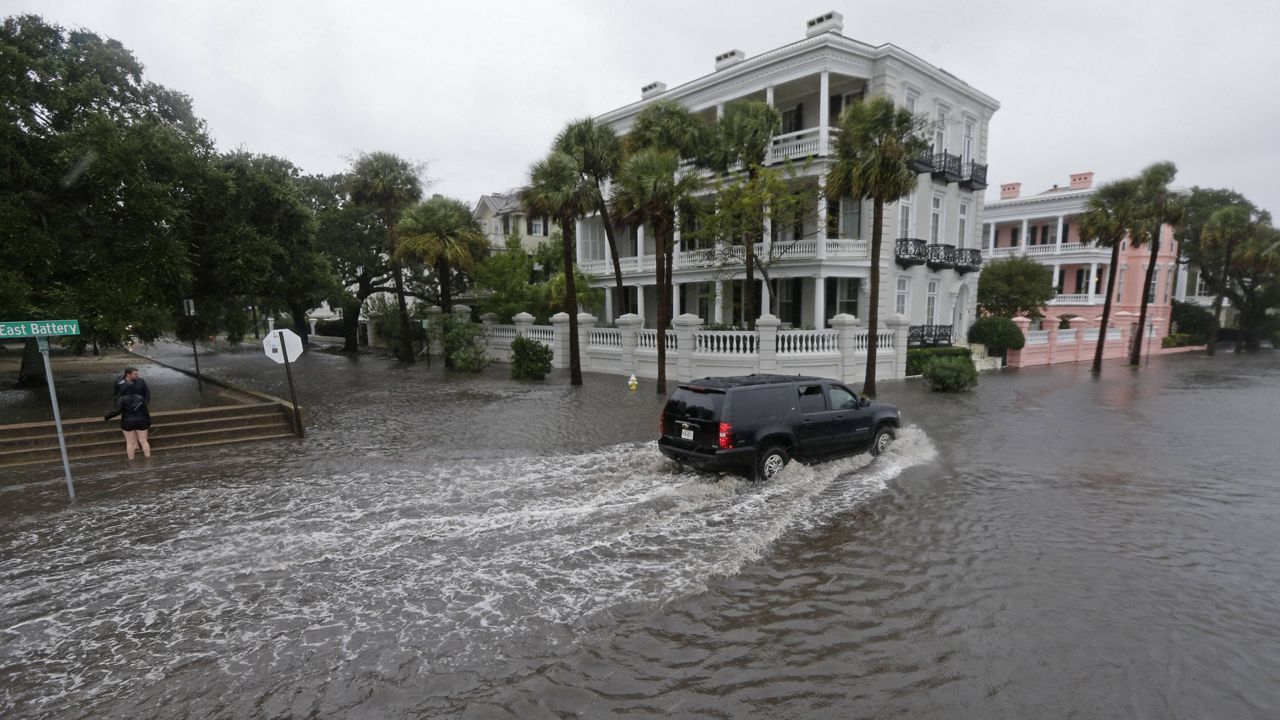Flooding along U.S. coasts is expected to be a worse problem starting in the 2030s due to the combination of a “wobble” in the moon’s orbit and rising sea levels resulting from climate change, according to a new NASA study.
What You Need To Know
- Flooding along U.S. coasts is expected to be a worse problem starting in the 2030s due to a “wobble” in the moon’s orbit and rising sea levels resulting from climate change, according to a new NASA study
- The researchers have projected that there will be a decade in which the number of floods will dramatically increase, impacting almost all U.S. mainland coastlines, Hawaii and Guam
- High-tide floods will occur more often and could sometimes happen in clusters lasting a month or longer, depending on the positions of the moon, Earth and sun, according to the study
- High-tide floods involve less water than hurricane storm surges, but their accumulated effect over time could be a significant problem, said Phil Thompson, the study’s lead author
Researchers from NASA’s Sea Level Change Science Team at the University of Hawaii have projected that there will be a decade in which the number of floods will dramatically increase, impacting almost all U.S. mainland coastlines, Hawaii and Guam.
High-tide floods — already a headache for many low-lying communities along the East and Gulf coasts — will occur more often and could sometimes happen in clusters lasting a month or longer, depending on the positions of the moon, Earth and sun, according to the study, which NASA says is the first to take into account all known oceanic and astronomical causes for floods. According to the the National Oceanic and Atmospheric Administration, there were 600 high-tide floods in 2019.
“Low-lying areas near sea level are increasingly at risk and suffering due to the increased flooding, and it will only get worse,” NASA Administrator Bill Nelson said in a news release. “The combination of the Moon’s gravitational pull, rising sea levels, and climate change will continue to exacerbate coastal flooding on our coastlines and across the world.”
Nelson said NASA hopes the information will be used to “plan, protect, and prevent damage to the environment and people’s livelihoods.”
The moon’s wobble affects its gravitation pull, the main cause of the rise and fall of ocean tides on Earth. The wobble is a regular part of the moon’s 18.6-year orbit and is not dangerous on its own. But it is expected to worsen the challenges created by rising sea levels, according to the study, which was published in the journal Nature Climate Change.
During half of the moon’s orbit, tides are amplified — high tides are higher, low tides are lower — and for the other half, they are suppressed — high tides are lower than normal, but low tides are higher. The moon is currently in the tide-amplifying stage of its cycle, but sea levels are not yet high enough to regularly top flooding thresholds. That won’t be the case in the mid-2030s, the next time the tides are amplified, the scientists said.
High-tide floods involve less water than hurricane storm surges, but their accumulated effect over time could be a significant problem, said Phil Thompson, an assistant professor at the University of Hawaii and the study’s lead author.
“If it floods 10 or 15 times a month, a business can’t keep operating with its parking lot under water,” he said. “People lose their jobs because they can’t get to work. Seeping cesspools become a public health issue.”
